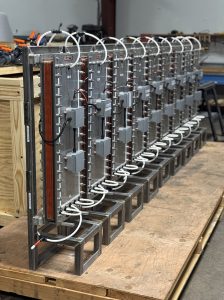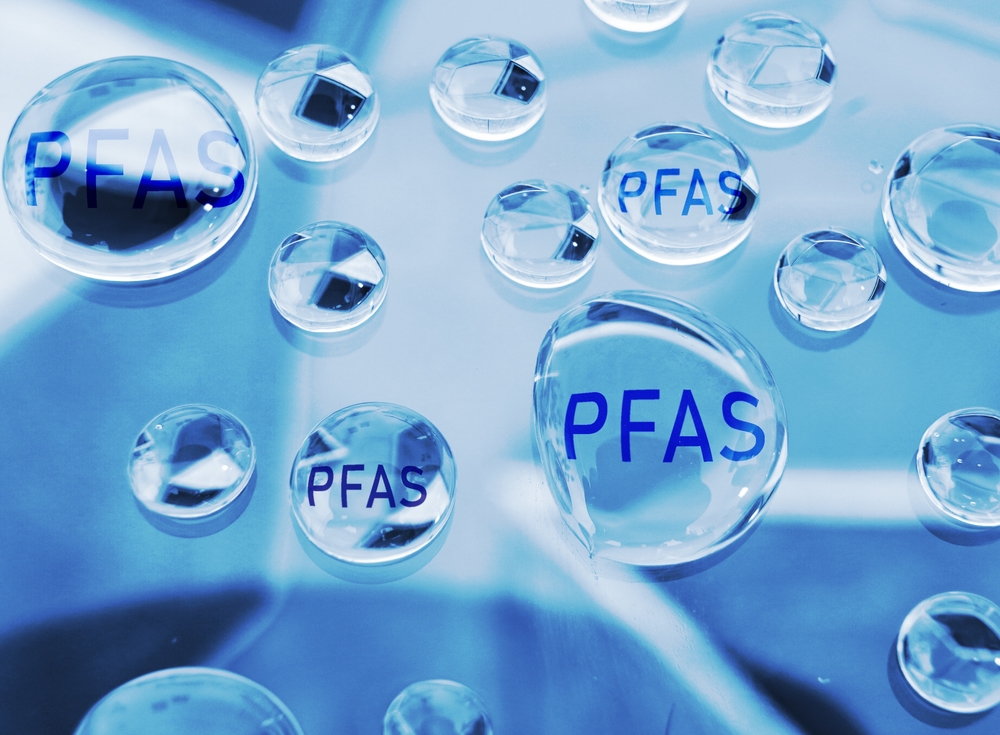Electrostatic PFA capture provides high efficiency, low waste, and cost-effective water treatment of long, short, and ultra-short chain compounds.
1 and polyfluoroalkyl substances (PFAs) have become one of the most urgent issues in environmental protection and regulatory compliance. These synthetic “Forever Chemicals” are widely used in industrial processes and consumer products, ranging from firefighters’ foam and fabrics to food packaging and electronics. However, their stability, sustainability, and bioaccumulation properties have led to widespread contamination, especially in landfills, groundwater and industrial wastewater.
PFAS compounds resist natural degradation and conventional water treatment, and their presence in drinking water, even at very low concentrations, is associated with harmful health outcomes, including cancer, damage to the liver and immune system, and developmental effects. As a result, government agencies around the US and around the world are setting increasingly strict limits on PFA concentrations in water for individual compounds such as PFOA and PFOS.
Treatment challenges
Traditional PFA removal techniques such as granular activated carbon (GAC), ion exchange (IX), and reverse osmosis (RO) work reasonably well with long chain PFAs, but with short chain variants, performance is poor. Additionally, these systems often produce secondary waste streams (used carbon, brine, or sludge) containing PFAS, presenting additional regulations and cost burden. Under the EPA’s Resource Conservation and Recovery Act (RCRA) proposal, disposal options are more limited, making the industry urgently seeking more sustainable and cost-effective alternatives.
Enter Biolargo’s Aqueous Electrostatic Concentrator (AEC)
Biolargo Equipment, Solutions & Technologies, Inc. has developed a next-generation solution called an aqueous concentrator. This modular membrane-based system uses electrokinetics to separate and concentrate PFA compounds from water with industry-leading efficiency, minimal waste production, and compelling life-cycle cost advantages.

AEC works by utilizing the anionic charge of PFAS molecules. As contaminated water passes through the treatment chamber, a controlled electrostatic field draws PFAs throughout the selective membrane and binds them to the surface. Non-target ions and neutral molecules pass through the system, but PFA is immobilized and later removed. The system does not require chemical additives, backwash cycles, and complicated pretreatment chemicals.
The main features of the AEC process are:
• Residence time of 2-30 seconds per stage
• Real-time conductivity monitoring for adaptive voltage optimization
• No interference from salt or suspended solids
• Low energy use and chemical demands
Continuous PFA Removal Monitoring
Demonstrated overall application performance
The AEC has been tested on both bench scale and field pilot projects in water types that contain a variety of PFAS, including:
• Raw landfill infiltrates
Posturethral (UF) leachate
Municipal wastewater
• Bubble from PFAS foam fractions
Reverse osmosis concentrate
With independent third-party verification from SGS and the University of Tennessee, the system has confirmed that it provides 99% PFA removal in one pass for most compounds. Multiple steps can be sequenced to consistently remove both long and short chain compounds, including PFOA, PFOS, PFNA, PFBA, Genx, PFHXA, and PFHXS, to achieve sub-detection reductions.
Some important examples:

The results confirm that AEC is suitable as a primary therapeutic solution and as a polishing step after other methods, providing a versatile and scalable approach to a variety of treatment scenarios.
Low waste profile, high regulatory preparation
AEC is moving away from legacy processing systems through ultra-low waste generation. The only important waste component is the PFAS binding membrane itself. It is designed to last 1-3 years depending on use and can be thermally or electrochemically destroyed. Unlike GAC and IX, AEC does not require contaminated salt water or dangerous media playback.
The AEC residuals are compatible with EPA-matched destruction methods, including hydrothermal alkaline treatments and electrooxidation. This positions the AEC as a compatible solution for the future, in anticipation of PFA’s RCRA hazardous waste classification, which is a result of the EPA’s regulatory roadmap.
The advantages of lifecycle costs
For utilities, landfills, and industrial users, costs are often the limiting factor for full-scale PFA repairs. This is where AEC offers one of the most persuasive benefits.

Capital Cost: $2.5 million to $4 million (scalable) Operating Cost: $100-$150 per day or $31,000 per year Energy and Chemical Applications: Minimum
Reducing waste disposal costs and elimination of salt water containing PFAS contributes to lifecycle savings of up to 80% over current technology.
Future PFAS Processing Platform
To ensure peace of mind and proper treatment, Biolargo equipment partnered with Verralize, an innovator in next-generation water testing technology, and Alpha has tested its “Lab-on-Sensor” field test kit for rapid, on-site detection (PFA) (PFAS) rapid and in-situ detection. These kits allow customers to test PFA in treated wastewater, ensuring that the system works properly without long laboratory wait times. This 10-minute test is expected to produce specific results with quantitative results between 1.5 ppt and 20 ppt.
Biolargo’s AEC solution represents a paradigm shift in PFAS water treatment.
•Efficiently remove all PFAS chain lengths.
•It effectively generates no hazardous waste.
• Integrate with destruction pathways for full compliance.
•Enables continuous monitoring along with validation field tests
•It does all this at just a small portion of the cost of traditional technology.
As regulatory pressures intensify and public concern grow, scalable and sustainable PFAS solutions become an essential infrastructure. Biolargo’s AEC offers a proven adaptable platform with fields ready to meet its challenges.
For technical specifications, site-specific modeling, or pilot testing inquiries, please contact us at pfas@biolargo.com
This article will also be featured in the 23rd edition of Quarterly Publication.
Source link

